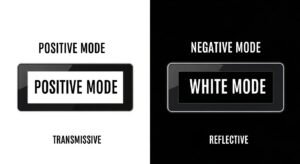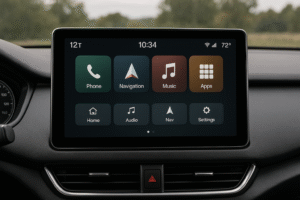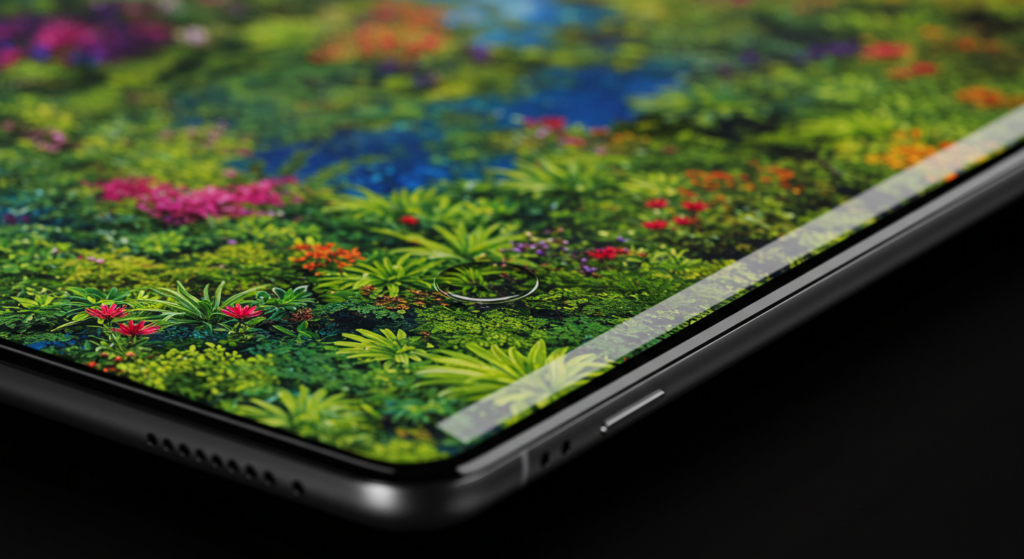
Touch accuracy is how well a device registers touch inputs. It’s crucial for smooth interactions on LCD screens, where poor accuracy can lead to missed or delayed inputs.
Resolution impacts touch accuracy by providing a finer pixel grid, allowing for more precise touch detection. However, higher resolutions can strain processing power, causing slower input recognition or unregistered touches on devices like smart fridges or vending machines.
To maintain touch accuracy, it’s important to optimize and calibrate touch systems for higher resolutions. Regular calibration, software updates, and better sensor quality can help improve touch accuracy.
How does screen resolution affect touch accuracy?
Screen resolution affects touch accuracy by providing a finer pixel grid, enabling more precise touch detection.
High-resolution screens, like 4K smartphones or touch-screen refrigerators, offer higher pixel density (PPI)(What is PPI (Pixels Per Inch)?), improving touch accuracy. This makes detailed tasks, like digital drawing or gaming, smoother and more precise, reducing mis-touches and lag.
- PPI (Pixels Per Inch): High PPI screens deliver clearer images and more precise touch response. For example, a 4K display is more sensitive than lower-resolution ones.
- TFT vs. IPS: IPS screens perform better in touch accuracy due to consistent color and minimal distortion, unlike TFT displays that can lose clarity at different angles(Difference between TFT and IPS displays).
How does pixel density (PPI) affect touch detection on different devices?
Higher PPI improves touch sensitivity and accuracy, especially on devices with fine touch requirements.
Devices like 4K smartphones or smart refrigerators with high PPI detect touches more accurately. In contrast, lower-PPI devices may result in less precise touch detection.
- Device Examples: Smartphones with over 400 PPI provide more precise touch detection, while lower-PPI displays struggle with fine details.
What are the key factors affecting touch accuracy on LCDs?
Touch accuracy on LCDs is influenced by touch technology and touch sampling rate(Understanding the Differences Between Self, Mutual, and Projected Capacitive Touchscreens). Capacitive screens generally provide more accurate responses than resistive screens, especially at higher resolutions.
Capacitive screens, like those using self-mutual projected capacitive technology, offer greater touch sensitivity and accuracy compared to resistive screens. These screens detect touch by measuring changes in electric fields, allowing for finer, more precise input. However, a high-resolution display can cause input lag if the touch sampling rate isn’t optimized, affecting devices like ticket vending machines or smart refrigerators.
- Capacitive vs. Resistive: Capacitive screens are more responsive because they detect electrical conductivity, while resistive screens use pressure, which can lead to less accurate input.
- Touch Sampling Rate: Higher resolutions require faster sampling rates to avoid lag. Devices like vending machines or smart fridges need to balance resolution and response time to maintain accuracy.
How does touch sampling rate impact touch accuracy on high-resolution LCDs?
The touch sampling rate must be high enough to match the screen resolution to avoid input lag, especially on high-res devices.
Devices with high resolution can overwhelm the touch sampling rate, causing delays if not properly optimized. This issue is especially noticeable in machines like ticket vending devices or touch-enabled refrigerators.
- Optimization: Optimizing touch sampling rates ensures faster, more accurate touch detection, even on high-resolution screens.
What challenges does high resolution pose for performance?
High-resolution screens demand more processing power, which can lead to slower performance and reduced touch accuracy if the hardware can’t support it.
While high-resolution screens improve accuracy, they also increase the processing load, potentially causing slower touch response on devices like older mobile phones or smart fridges. This can result in noticeable delays in touch inputs. Additionally, higher resolution can drain battery life faster, impacting devices like touchscreen fridges or mobile phones.
- Increased Processing Demands: Devices with high-resolution screens require more CPU and GPU power, which can slow down performance if the hardware isn’t upgraded to handle it.
- Battery Life: High-res displays consume more energy, causing faster battery depletion. Smart fridges or mobile devices may need larger batteries to compensate for this.
How does high resolution affect battery life on touch-enabled devices?
High-resolution displays consume more power, leading to faster battery drain, especially on devices like smart fridges and mobile phones.
The increased pixel density in high-resolution displays demands more energy, which results in shorter battery life unless the device has larger batteries or power-saving optimizations.
- Power Efficiency: Devices with high-resolution displays should prioritize power-efficient components to balance performance and battery life.
How does screen size vs. resolution impact touch accuracy?
Larger screens require higher resolutions for better touch accuracy, but without optimization, they can lead to unregistered touches or delayed responses.
Larger screens, like those on interactive mall displays or large LCD monitors, demand higher resolutions to maintain accuracy. However, without proper optimization, users may experience missed touches or slow responses, especially on multi-touch screens. Devices such as smart refrigerators or ticket vending machines face challenges when handling multiple touch points, which can lead to inaccurate inputs if the resolution isn’t balanced with processing power.
- Screen Size vs. Resolution: Larger displays need higher resolution to maintain touch accuracy. However, the system needs to be optimized to process the increased number of touch points, preventing issues like input delays.
- Multi-Touch Recognition: Multi-touch accuracy is more complex on larger, higher-resolution screens. Devices must be equipped with advanced sensors to handle simultaneous touch points effectively, ensuring precision in applications like interactive displays.
How does multi-touch recognition work on larger screens?
Multi-touch recognition becomes more complex on larger, higher-resolution screens, requiring advanced sensors to detect multiple touch points accurately.
To ensure precise multi-touch on larger devices, such as smart refrigerators or ticket vending machines, the system needs to support higher touch sampling rates and more refined touch sensors, ensuring no input is missed.
- Advanced Touch Sensors: Devices with multi-touch capabilities must have highly responsive capacitive or optical sensors to detect several touch points at once without errors.
How will rising screen resolutions impact touch accuracy?
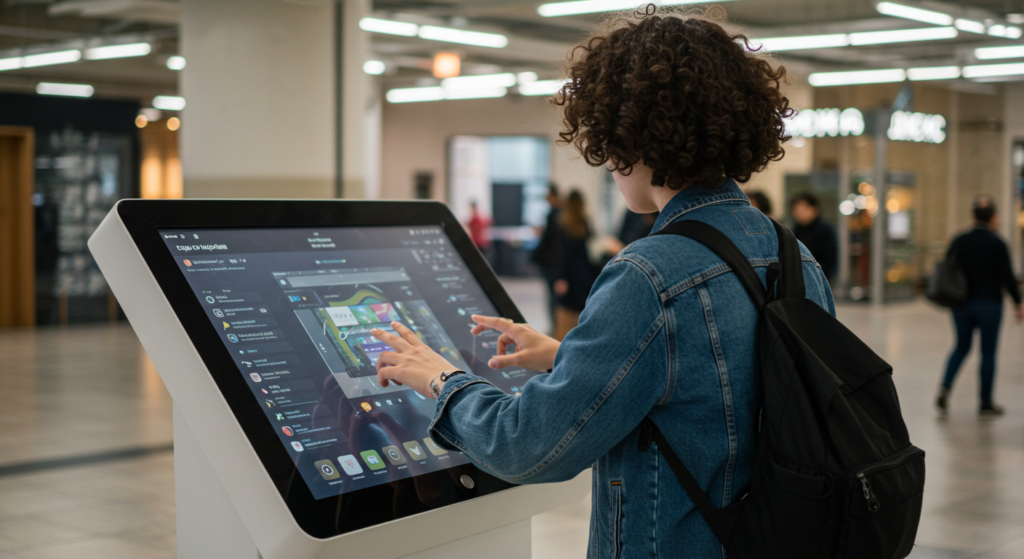
As screen resolutions increase, user expectations for precise touch interactions rise, presenting challenges in developing adaptive touch interfaces.
With the shift to 4K and beyond, devices must adapt touch interfaces to handle higher resolutions while maintaining touch accuracy. This requires continuous advancements in touch technology to ensure precise detection across different resolutions. The challenge lies in optimizing devices to recognize touch inputs accurately despite increased pixel density, particularly in future displays like OLED and OLED touch panels.
- Rising Resolutions: Higher resolutions bring finer pixel grids, which increase the need for more precise touch recognition. However, achieving this requires software and hardware optimization to ensure accurate touch responses at high pixel densities.
- Latency and Input Lag: Ultra-high-resolution screens demand faster processing power. If the device cannot process touch inputs quickly enough, users may experience latency or input lag, which degrades the touch experience.
How can touch technology scale with next-generation displays like OLED?
Next-generation displays, like OLED, require touch technology to evolve, ensuring responsiveness and accuracy at ultra-high resolutions.
OLED and OLED touch panels are pushing the boundaries of resolution and display quality. To keep up, touch technology must evolve to handle higher resolutions without introducing lag, ensuring accurate touch inputs on these advanced displays(Can We Replace an LCD with an AMOLED Display? A Professional’s Insight).
- Future-Proofing: Ensuring that touch systems are capable of scaling with OLED and other high-resolution displays requires continuous upgrades in touch sensors and processing power, maintaining responsiveness even as display resolutions increase.
Why isn’t high resolution always better for touch accuracy?
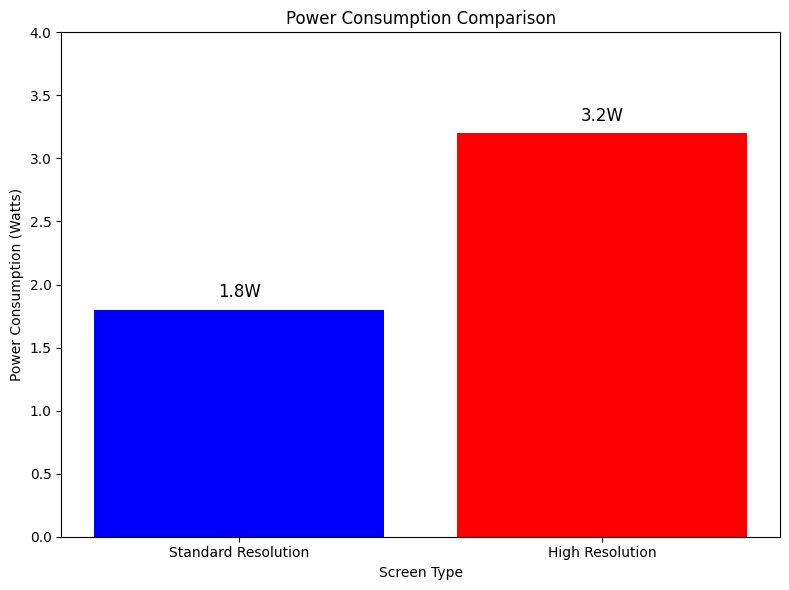
High resolution doesn’t always guarantee better touch accuracy due to potential issues like improper calibration or processing delays.
While higher resolution displays offer finer pixel grids, they can cause touch accuracy issues if the device’s hardware or software isn’t optimized to handle the increased data. For example, users may experience problems like black spots on the screen or unresponsive areas, particularly in devices that haven’t been calibrated correctly. Additionally, if the processing speed isn’t fast enough to match the increased resolution, input lag can occur, reducing touch responsiveness.
- Improper Calibration: If a high-resolution screen isn’t calibrated correctly, touch points might not align with the actual display, resulting in inaccurate touch inputs.
- Processing Delays: Devices with high resolutions may experience delays in processing touch data, leading to slower or missed touch responses.
How can touch accuracy be improved with current devices?
Touch accuracy can be improved through touchscreen calibration, software optimization, and enhancing sensor quality.
To improve touch responsiveness, users can calibrate their touchscreens to ensure accurate input detection. Additionally, optimizing software to handle high-resolution touch data efficiently and upgrading sensors for finer touch detection can significantly boost accuracy.
- Calibration and Optimization: Regular touchscreen calibration and software updates can fix touch inaccuracies, while higher-quality sensors improve overall touch sensitivity.
Conclusion
Screen resolution plays a critical role in determining the accuracy of touch interactions on LCD screens. While higher resolutions offer finer pixel grids and improved touch detection, they can also strain processing power and lead to issues like input lag or unregistered touches. Optimizing hardware, calibrating sensors, and balancing screen resolution with device capabilities are essential to achieving precise touch performance, especially as device resolutions continue to rise in future technologies like OLED.
By addressing these factors, devices can maintain smooth and accurate touch responses, enhancing the overall user experience.
FAQ
1. Does higher screen resolution always improve touch accuracy?
No, higher resolution doesn’t always guarantee better touch accuracy. It depends on the quality of the touch sensors and the touch technology used, such as capacitive or resistive screens.
2. Can a high-resolution screen cause performance issues with touch input?
Yes, higher resolution screens require more processing power, which can lead to slower touch response times or input lag, especially on lower-end devices or older systems.
3. Why do I experience unregistered touches on a high-resolution screen?
Unregistered touches on high-resolution screens may occur if the touch system isn’t optimized for the increased pixel density or if there are limitations in the touch sensors or processing power.
4. Does increasing screen resolution affect battery life?
Yes, higher resolution screens can consume more power, leading to shorter battery life, particularly on mobile devices or other battery-powered systems.
5. How can I improve touch accuracy on my device?
To improve touch accuracy, ensure your screen is calibrated correctly, and use devices with high-quality capacitive touch technology. Also, updating your software or touch drivers can help optimize touch performance.
6. What is the impact of screen size on touch accuracy?
Larger screens require higher resolutions to maintain touch accuracy. If not optimized properly, larger screens may experience touch issues like unregistered or delayed inputs.
7. Are multi-touch gestures more difficult on high-resolution screens?
While high-resolution screens can handle more touch points, they require advanced touch recognition algorithms to properly detect and manage multi-touch gestures. Without proper software, this can lead to inaccuracies.
8. How can I ensure consistent touch performance across devices with different screen resolutions?
Ensure that your application or device is optimized for various resolutions. Developers should focus on responsive UI designs that adjust touch targets and scaling based on screen size and resolution.
9. Will higher resolution affect my device’s longevity or future compatibility?
As screen resolution increases, it may require more power and advanced touch systems. Devices not optimized for future resolutions could experience performance issues, so it’s essential to consider future-proofing your hardware choices.
10. What’s the best resolution for a touch screen in everyday use?
For everyday tasks, a moderate resolution (e.g., 1080p or 1440p) is often sufficient for most users, balancing touch accuracy, performance, and battery life without the drawbacks of excessively high resolutions.




